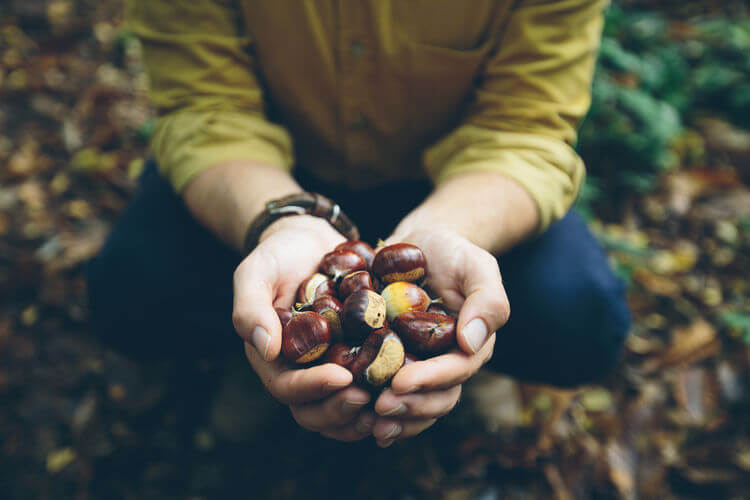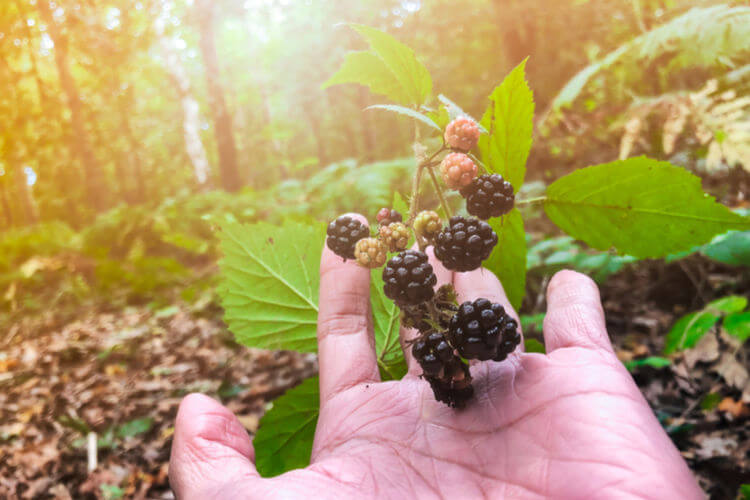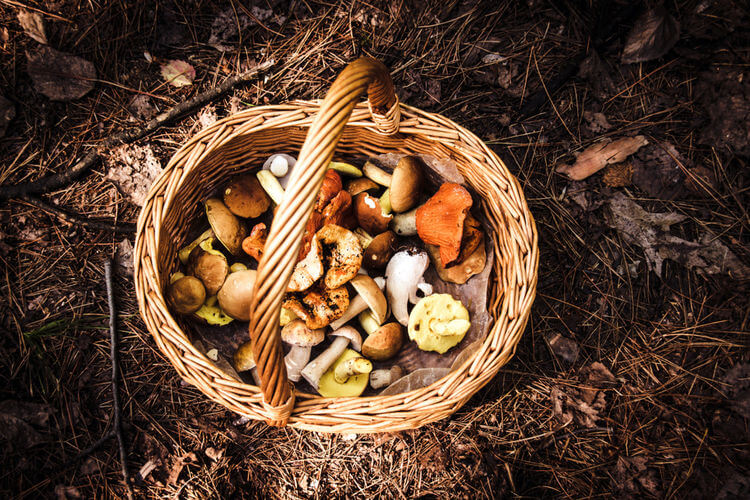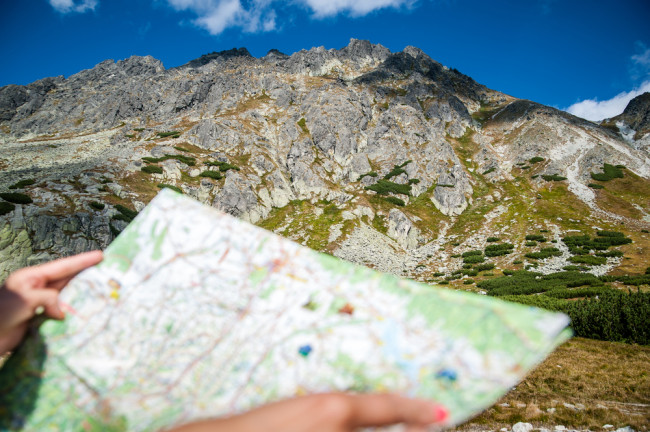
If you love the idea of fresh, natural seasonal food you may have considered wild foraging.
We've put together a short foraging guide for absolute beginners to make sure your wild food experiences are fun, healthy and happy.
What is foraging?
Wild foraging is the increasingly popular practice of gathering uncultivated food on common land. It was popularised by TV chef Hugh Fearnley Whittingstall in his first series, A Cook On The Wild Side. Wild foodstuffs can include fish, snails or even wild game. For this article we're assuming you're hoping to sample some of the gastronomic delights easily available to inexperienced countryside foragers, like nuts, fruit, leaves and mushrooms.
What do I need to know for foraging?

Those delicious looking plants are just as likely to be poisonous as nutritious, so do your homework or sign up for a foraging training course.
At first, stick to plants you know and/or take someone more knowledgeable with you. Most of us can recognise blackberries, so why not start there. Nettles and dandelions are also easy to recognise. If you're ever less than 100% sure you know what it is, don't pick it.
Avoid plants near motorways or railways which may be polluted. If you want to avoid agricultural chemicals stay away from field borders, too.
Learn to recognise endangered species and leave them alone, and respect each food-producing plant by leaving enough behind to allow them to grow back.
Regardless of whether or not the food you pick is uncultivated, if it's on private land you'll also need the owner's permission.
What foraging equipment do I need?

An illustrated field guide
This will help you to identify dangerous plants.
A map
Both to find your way back and to avoid straying onto private land.
A collecting receptacle
A plastic food box is probably fine for berries or mushrooms. You will also need a day pack for your water bottle and other essentials. Add an ultralight foldaway rucksack if you're hoping to have extra loads to carry home.
A torch
You may not need this, but take it anyway. Particularly in autumn, when the foraging is particularly good, dusk can fall unexpectedly so a torch or similar light may prove vital. For emergency back-up you can't beat a wind-up torch which works without batteries. Take your mobile phone, too, in case you need to call for help.
Check out our full range of torches and lanterns.
Practical clothes
A pair of sturdy walking boots will take you over unpredictable terrain. Wear something comfortable. Old clothes that you don't mind ruining may be best if you're planning to scrabble in brambles, for example. Carry a light waterproof jacket, like a foldaway cagoule, in your day pack in case of rain.
Picnic and/or cooking equipment
If you're planning to eat your bounty in the wild, you may need a camping stove and picnic set & rug.
See our full range of cooking equipment and picnic accessories.
If you want to know more about what you can and can't eat when foraging, check out our fantastic Eat Wild foraging guide!
Looking for more tips on what to eat while camping? Take a look at these blog posts...
The Best Camping Stoves & Cookers For Amazing Campsite Meals | Delicious Vegetarian Campfire Recipes | Tips For Cooking, Eating & Drinking at Festivals







